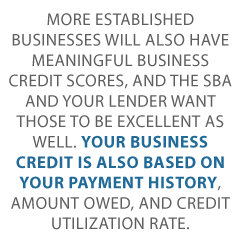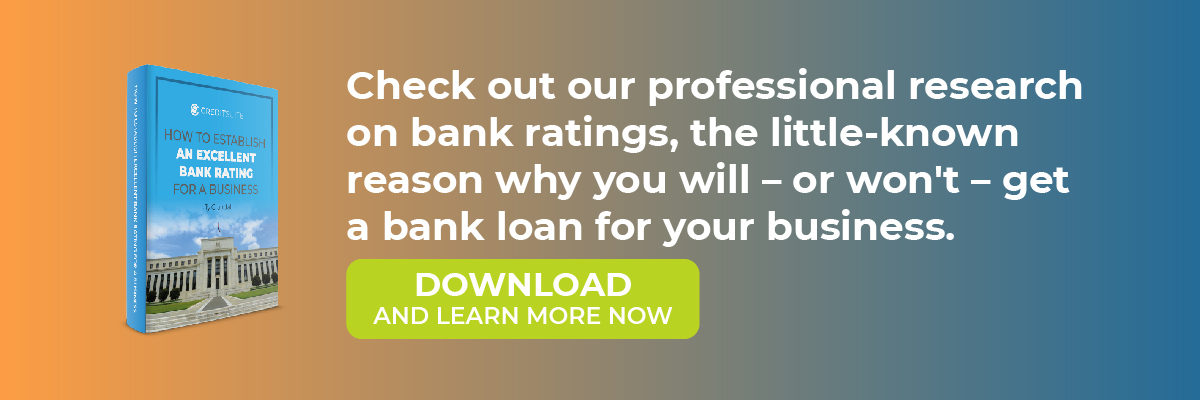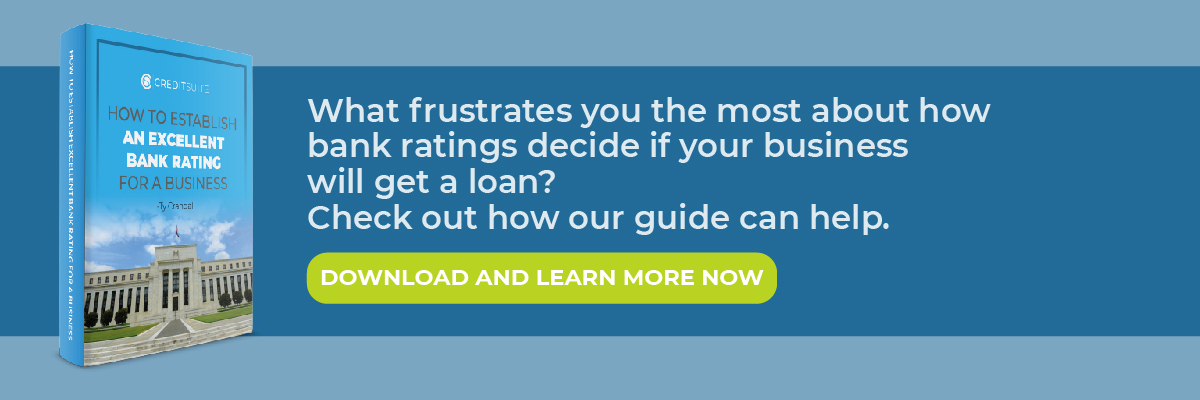Grab an SBA loan checklist and get the funding your business needs to grow and flourish, even during recession periods. But be aware – it’s a lot. And SBA loans are hard to qualify. More on that later. And keep in mind, during the COVID-19 situation, the SBA Paycheck Protection Program is out there, but the program’s rollout has been rocky.
Check out the most current information on the SBA Paycheck Protection Program
Recession Era Funding
The number of US financial institutions and thrifts has been decreasing slowly for 25 years. This is from consolidation in the marketplace along with deregulation in the 1990s, reducing obstacles to interstate banking. See: https://www.fundera.com/blog/happened-americas-small-businesses-financial-crisis-six-years-start-crisis-look-back-10-charts
Assets concentrated in ever‐larger financial institutions is problematic for small business owners. Big banks are much less likely to make small loans. Economic slumps mean banks become much more mindful with lending. Luckily, business credit does not count on banks.
What Does the SBA Do?
The Small Business Administration isn’t a lender; they just guarantee loans from conventional lenders, such as banks and credit unions. This is true even during recession periods.
The Small Business Administration truly wants your new small business to succeed. They know from experience that your business’s funding sources might not be perfectly reliable, particularly if your business is a new one. You might be trying to get a trade line but cannot get one, at least for the time being. Your parts supplier might end up with a strike at the factory. The weather could make your fruit supplier’s crop fail. Or your competitor might get to market first.
No matter what your reason for wanting a Small Business Administration loan, here are the specifics of what you will need:
SBA Loan Checklist for Recession Periods: Make Sure You Have Excellent Credit, Both Business and Personal, Plus Bank Credit
The SBA and the bank want to see your personal credit score, particularly if your business is a new one.
SBA Loan Checklist for Recession Periods: Your Personal Credit Scores
Your personal credit score runs from 300 to 850. The number is dependent upon several factors, including the following.
It will show how fast you pay your bills. This is the most important factor.
It will also show how completely you pay your bills. And it will include the length of time you have had credit.
Plus it will show how much of your overall credit you are using. This is called your credit utilization rate. It will also include how many recent inquiries you have had on your personal credit reports.
And it will contain information on the type of credit you’re using. So those are credit cards, mortgage, etc.
Payment history and amount owed are the two biggest factors in figuring your personal credit score. You can’t have bankruptcies or other big blemishes on your personal credit report.
SBA Loan Checklist for Recession Periods: Your Business Credit Scores
More established businesses will also have meaningful business credit scores, and the SBA and your lender want those to be excellent as well. Your business credit is also based on your payment history, amount owed, and credit utilization rate.
However, it’s also based on whether there are any liens or judgments against your business, or any UCC filings. Your business credit score also has a basis in your revenue and cash flow.
Credit inquiries don’t impact your business credit score like they do your personal credit score. Good business credit means a PAYDEX score of 80 or better.
SBA Loan Checklist for Recession Periods: Great Bank Credit
Excellent bank credit will include keeping over $10,000 liquid in your accounts. But let’s look at what bank credit is in the first place.
A bank credit rating is a measure of the sum total of borrowing capacity which a business can get from the banking system only.
Bank Credit Ratings Clarified
A business can get more company credit promptly, so long as it has at least one bank reference and an average day-to-day account balance of a minimum of $10,000 for the most recent 3 month time period. This setup will generate a bank credit score of a Low-5. So this means it is an Adjusted Debt Balance of from $5,000 to $30,000.
A lower rating, like a High-4, or balance of $7,000 to $9,999 will not immediately deny the business’s loan application. Nonetheless, it will slow down the approval process.
What is a Bank Score?
A bank score is a measure of the average minimum balance as kept in a business bank account over a 3 month long period. Thus a $10,000 balance| will rate as a Low-5, a $5,000 balance will rank as a Mid-4, and a $999 balance will rate as a High-3, and so on.
A company’s chief objective ought to always be to maintain a minimum Low-5 bank score (or, an average $10,000 balance) for at the very least 3 months. This is because, without at least a Low-5 score, the majority of financial institutions will operate under the assumption that the business has little to no capacity to repay a loan or a business line of credit.
But there is one point to bear in mind – you will never really see this number. The bank will just keep this number in its back pocket.
The Bank Rating Ranges
The numbers work out to the following ranges:
To get a High-5 rating, your small business will need to have an account balance of $70,000 to $99,999. For a Mid-5 rating, your business must have an account balance of $40,000 to $69,999. And for a Low-5 score, your business should keep an account balance of $10,000 to $39,000. So your business needs this level bank rating or better to get a bank loan.
For a High-4 score, your small business must have an account balance of $7,000 to $9,999. And for a Mid-4 rating, your small business must keep an account balance of $4,000 to $6,999. So for a Low-4 rating, your small business will need to have an account balance of $1,000 to $3,999.
SBA Loan Checklist for Recession Periods: Keep a High Balance
Perhaps the most convenient way to attain and keep a great bank credit rating is to deposit at the very least $10,000 into your business bank account and keep it there for as long as six months. While you will still need to make regular deposits, this straightforward step will aid in three ways.
One, you will have kept a great minimum balance for a minimum of 3 months. 2, you will most likely not overdraw with such a great balance. And three, you will be at the magic minimum for a Low-5 bank credit score. Therefore you will be dealing with our # 4 and # 7, above.
And you might even be able to get around our # 3. Yet we still highly recommend overdraft protection.
SBA Loan Checklist for Recession Periods: Keep Your Information Congruent
Ensure your small business account information are consistent across the board, all over. No lender will stop to consider the myriad ways your business can be listed online. If they don’t see what they want, they’ll just deny your application.
SBA Loan Checklist for Recession Periods: Make Consistent Deposits
You will need to make consistent deposits, and make sure they are more than the quantities you are withdrawing each month.
SBA Loan Checklist for Recession Periods: Know and Follow Your Lender’s Minimum Requirements and Amounts
For one thing, your business must meet the SBA’s size standards, as these loans are only meant for small businesses. You will need to be current with any government loans, and that includes personal student loans.
SBA Loan Checklist for Recession Periods: Documents, Documents, Documents
Of course you’re going to need paperwork! Traditional lenders will generally request a wide variety of legal and financial documents during the application process, which can include the following.
Bring in your personal and business income tax returns, generally for the most recent three years. You should also bring in your business’s balance sheet and income statement.
Don’t forget your business and personal bank statements. And bring in a photograph of your driver’s license.
Plus you will need a copy of any commercial leases your business has. And take along copies of contracts you have with third parties.
You will need copies of your business licenses. And add a copy of your articles of incorporation.
Carry along a resume which demonstrates relevant management or business experience. Take along a set of financial projections if your small business has a limited operating history.
Bring with you a profit and loss statement current to the past 90 days. Take your loan application history.
And don’t forget your business credit report!
SBA Loan Checklist for Recession Periods: A Good Business Plan
You’re not done with the documents yet. Good business plans show the following items.
Make sure to include a description of your company. And add a description of your product and/or service.
Include the names of the people on your management team. And put in an analysis of your industry.
You will need to include your facilities and operations plan. Also include your promotional, marketing and sales strategy.
And add what’s called a SWOT analysis. This stands for strengths, weaknesses, opportunities, threats. The idea is to show you know your business and your industry well.
SBA Loan Checklist for Recession Periods: Collateral or a Personal Guarantee
You will also, most likely, need to put up collateral. Collateral is assets which the lender can seize in the event that you default on the loan. These kinds of assets include inventory, equipment, vehicles, and any real estate the company may own.
Another species of collateral is what’s called a blanket lien. These liens give the lender the right to take assets covered under the lien in the event of nonpayment.
In the absence of collateral, the lender will want a personal guarantee.
If you can provide all of these documents and fulfill all of these requirements, then an SBA loan just might be in your small business’s future. The COVID-19 situation will not last forever.


